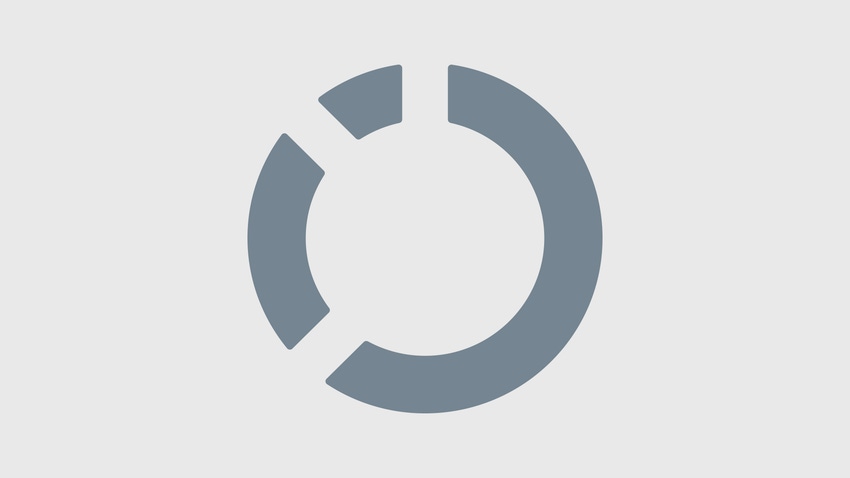Hyper-Inflated Tech Stats Grow 217% Crazier
The tech industry is rife with over-the-top, groundless predictions and estimates. Try these on for size.

The gaga for Glass is reminiscent of the early hype around the Segway, those two-wheeled Mall Cop electrical vehicles that were going to one day replace cars in green urban settings and ultimately change the world. Before Segway Inc. unveiled its first model in December 2001, renowned tech venture capitalist and early backer John Doerr predicted that the company would generate $1 billion in sales by the end of 2002 and thus would reach that milestone faster than any company in history. Today, Hoover's puts the revenue of Segway, acquired earlier this year by Summit Strategic Investments for an undisclosed sum, at $18.2 million.
-- To chronicle why Hadoop is the "toast of the big data era," InformationWeek published a Nov. 14, 2011, magazine cover story titled "Hadoopla!" suggesting that this promising open source data processing platform was being celebrated with a touch of irrational exuberance.
The party isn't over. A recent forecast by Transparency Market Research values the Hadoop market at $1.5 billion in 2012 and predicts it will grow at a compound annual growth rate of 54.7% (because un-round numbers convey precision) to $20.9 billion in 2018.
But as "Hadoopla!" author Doug Henschen now observes, the deployed customer base is still mostly tire-kickers; the number of companies actually getting value from data on Hadoop is unknown. "Odds are we're headed into a trough of disillusionment that will cool the 50%-plus CAGR they're expecting," he says. "It's a case of extrapolating current growth rates rather than anticipating that they will change."
-- Sometimes the industry exaggerates wildly, then pulls back to project credibility. While acknowledging the difficulty in calculating losses from global cybercrime and cyber espionage, security vendor McAfee nonetheless takes a crack at it in a July report, which breaks down "malicious cyber activity" into six components: loss of intellectual property and confidential business information; cybercrime; loss of sensitive information (including stock market manipulations); opportunity costs (such as reduced trust in online commerce); security costs (security technology, insurance, recovery, etc.); and reputational damage to hacked companies.
"Put these together and the cost of cybercrime and cyber espionage is probably measured in the hundreds of billions of dollars," $400 billion at the high end, the report states. That estimate compares with the trillion-dollar-plus estimates security vendors have put forth in the past. Former McAfee CEO Dave DeWalt said in 2007 that cybercrime -- just one of the six categories McAfee laid out in its latest report -- accounted for $105 billion in damages, a figure that was criticized by InformationWeek readers as over-the-top and groundless.
To put that $400 billion estimate into perspective, the report notes that global GDP was about $70 trillion in 2011, meaning security losses are a fraction of a percent of global income -- huge but not overwhelmingly so.
-- Social media is another sector prone to hyperbolic statements. How many people are now "active" on Facebook, more than 1 billion? OK. But 340 million on the sedentary Google+? Really?
 Global CIOs: A Site Just For You Visit InformationWeek's Global CIO -- our online community and information resource for CIOs operating in the global economy.
Global CIOs: A Site Just For You Visit InformationWeek's Global CIO -- our online community and information resource for CIOs operating in the global economy.
Meantime, companies that measure their social activity by their number of Twitter followers may be (inadvertently) exaggerating that activity. In a study whose results were published in June 2012, the University of Milan's Marco Camisani Calzolari analyzed Twitter followers of 39 large companies, finding that as many as 45% of them (in the case of DellOutlet and WholeFoods) were bots rather than humans. (Maybe those bots are gathering with the hundreds of millions of folks active on Google+ before watching the Academy Awards ceremony.)
-- Sometimes provocative predictions take on a life of their own. Ever since Gartner research VP Laura McLellan predicted 20 months ago that CMOs and other marketing leaders will spend more on IT than CIOs will spend by 2017, her prediction has become almost an industry truism, on par with Moore's Law.
McLellan's thesis is sound: Marketing's role in companies is expanding as e-commerce grows and customer-facing social and mobile platforms rise in importance. Meantime, marketing department spending on IT is rising faster than conventional IT organization spending.
But will those two spending lines necessarily cross by 2017? Couldn't a backlash against ill-conceived IT spending by marketers stall or reverse this trend? What if CIOs themselves become more marketing savvy, partnering with their colleagues rather than ceding tech-buying responsibility to them? At a recent InformationWeek meeting of six healthcare CIOs, we asked them whether their IT dollars are moving to their enterprises' marketing departments, and they all said no, not at all.
Perhaps healthcare is an exception among industries, but there are far too many extenuating circumstances to put much stock in the Gartner prediction. In fact, in an industry disrupted so often by technical and commercial innovations, leadership changes, regulatory shifts and other brute forces, forecasting and statistical estimation of any kind is risky business.
We're just scratching the surface here. Please chime in below with your own examples of tech industry statistical exaggerations, lies and damn lies.
About the Author(s)
You May Also Like







